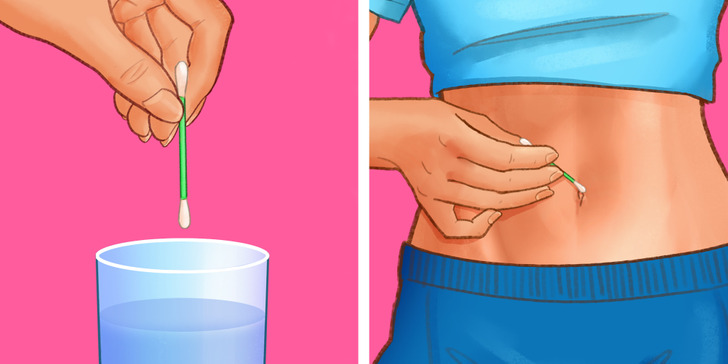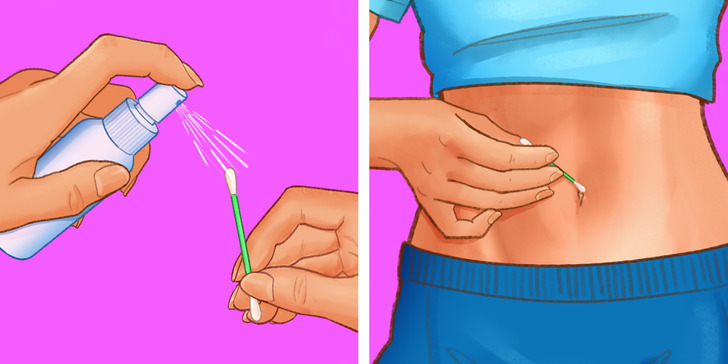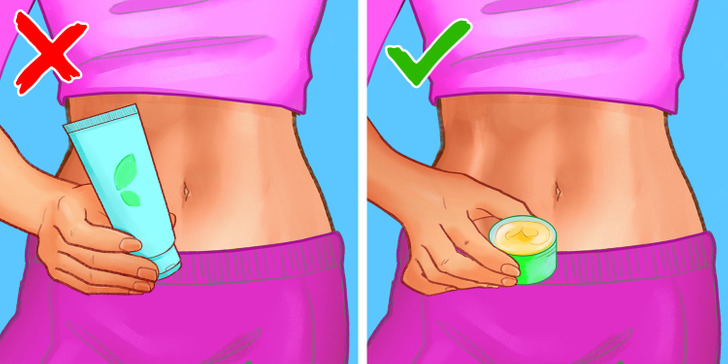How to Clean Your Belly Button
Scientists found out that about 67 groups of different bacteria live in the human navel on average. Most of them are harmless, but some can mix with sweat, dirt, and soap scum and cause an unpleasant smell. To prevent this from happening, it is important to wash and clean the navel area regularly.
5-Minute Crafts is telling you about several ways of how one can clean their belly button.
Salt water clean-up

✅ Warm saltwater solution can clean and disinfect the skin well.
- Prepare the saltwater solution by mixing a small amount of lukewarm water and sea salt.
- Take a Q-tip, wet it in the solution, and carefully scrape out the dirt from the inner part of the belly button.
- Using a cotton pad, rinse the navel with the salty solution.
- Remove the extra liquid with a towel or napkin.
- Repeat the process if you see that not all dirt was gone during the cleaning process.
Rubbing alcohol

- Take a cotton swab and slightly wet it in the rubbing alcohol.
- Carefully rub the inner part of the belly button with the swab. Replace it with a new one if it gets dirty. Continue cleaning until the swab comes out clean.
- Take a new cotton swab. Dip it into the water and rub the areas with the alcohol.
- Take a shower, and then dry out the belly button with a towel.
✅ You can use a hydrogen peroxide solution instead of rubbing alcohol. It can perform this task as well.
Warm oil

Some dirt in the belly button can be more stubborn. In order to soften it and then remove it, use warmed coconut oil.
- Apply several drops of warmed coconut oil to the belly button and massage it gently with circular movements.
- Lightly stretch the skin around the navel and use a cotton swab to remove softened dirt.
- Remove the leftovers of the oil with a cotton disc, rinse the belly button with water, and let it dry.
❗ Don’t apply any cream or moisturizing lotion inside the navel. It can contaminate the belly button and promote the growth of bacteria inside it.